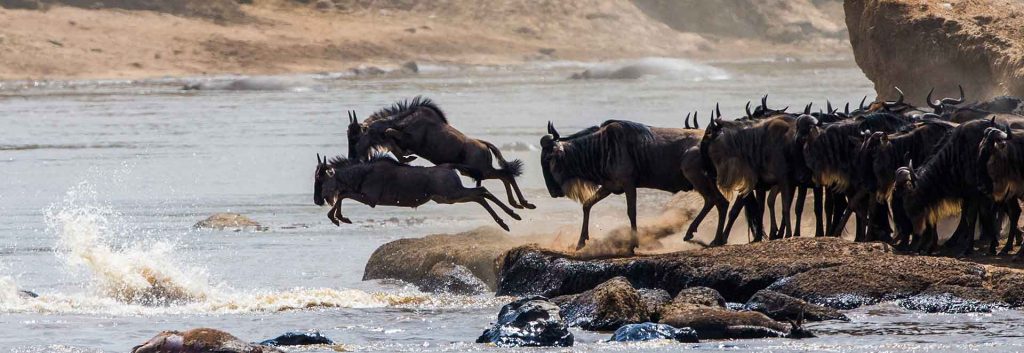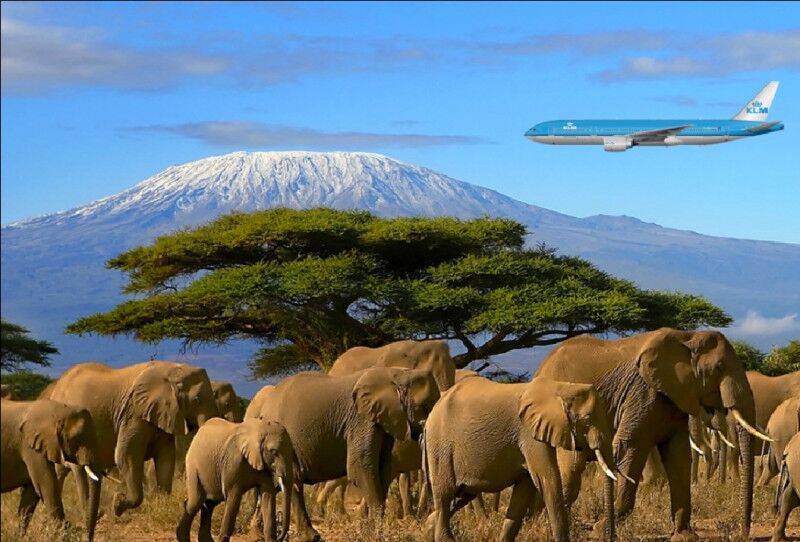10 Days Serengeti Wildebeest Migration Safari
Serengeti Wildebeests Migration is a display of natural wonders with over two million wildebeests, zebras, and antelope traveling over 450 miles across the plain to ensure their survival, unaware that there’s danger presented by the stalking lions and cheetahs among other predators of the wildlife. Witness huge crocodiles of the Mara River as they wait for the herbivorous to cross the swollen Mara river and enter into Masai Mara Game Reserve from Serengeti National Park.
The wildebeest migration river crossing in August moves north, passing through the Lobo area (north of Central Serengeti National Park) and the Wagakuria area (remote northern Serengeti National Park along the Mara River) en-route to Kenya’s Masai Mara Game Reserve
Itinerary
Day 01: Arrival – Arusha
Meals: Dinner
Accommodation: The Mount Meru Hotel
Day 02: Serengeti National Park (North)
Meals: B,L,D
Accommodation: Mara Under canvas Tented Camp (Luxury)
Day 03: Serengeti North (Kogatende)
Meals: B,L,D
Accommodation: Mara Under canvas Tented Camp (Luxury)
Day 04: Serengeti North (Kogatende)
Meals: B,L,D
Accommodation: Mara Under canvas Tented Camp (Luxury)
Day 05: Serengeti National Park (Central Seronera)
Meals: B,L,D
Accommodation: Serengeti Acacia Tented Camp
Day 06: Serengeti Central (Central Seronera)
Meals: B,L,D
Accommodation: Serengeti Acacia Tented Camp
Day 07: Serengeti Central (Cental Seronera)
This is another full day game drive at Serengeti National Park, known for its healthy population of resident wildlife, particularly the “big five”, named for the five most prized trophies taken by hunters:
Lion: the Serengeti is believed to hold the largest population of lions in Africa due in part to the abundance of prey species. More than 3,000 lions live in this ecosystem.
African Leopard: these reclusive predators are commonly seen in the Seronera region but are present throughout the national park with the population of around 1,000.
African Elephant: the herds are recovering from population lows in the 1980s caused by poaching and are largely located in the northern regions of the park.
African Buffalo: considered by many to be the most dangerous of the big five, reportedly causing the most hunter deaths, with wounded animals reported to ambush and attack pursuers.
Rhinoceros: this may refer to either black or white rhinoceros. Among big five game hunters, the black rhinoceros is preferred, although it is now critically endangered.
Meals: B,L,D
Accommodation: Serengeti Acacia Tented Camp
Day 08: Ngorongoro Crater Tour
Meals: B,L,D
Accommodation: Ngorongoro Sopa Lodge
Day 09: Tarangire National Park
Meals: B,L,D
Accommodation: Tarangire Sopa Lodge
Day 10: Back to Arusha
Meals: B,L
Accommodation: Can be arranged at an extra cost
Inclusions
- Park fees (for non-residents)
- All activities (unless labeled as optional)
- All accommodation as stated in the itinerary
- A professional driver/guide
- All transportation (unless labeled as optional)
- All Taxes/VAT
- Roundtrip airport transfer
- All Meals (as specified in the day-by-day section)
- Drinking water on all days
For Mountain climbing tours:
- Camping Equipment
- Porterage
Not Included:
- International flights (from/to home)
- Additional accommodation before and at the end of the tour
- Tips (tipping guideline US$5.00 pp per day)
- Personal items (souvenirs, travel insurance, visa fees, etc.)
- Government imposed increase of taxes and/or park fees
- Alcohol drinks
For Mountain climbing tours:
- Rescue Fee
- Climbing Gear
- Sleeping Bag
- [wpforms id=”478″ title=”true” description=”true”]


